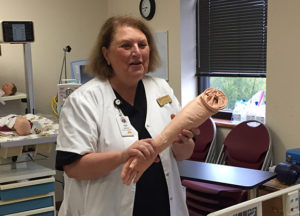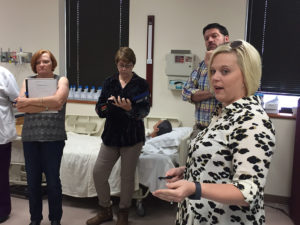Though hands-on activities are often key components for health science students, very rarely do professors get the opportunity to show students what it’s really like to work in a hectic, hospital environment.
Until now, that is.

On Friday, Nov. 18, students from the departments of respiratory care, radiologic sciences, and nursing will be taking part in an “Adult Code” simulation event.
“This semester, our simulation scenario is an adult who’s been rushed to the ER,” Jessyca Wagner, assistant radiology professor, said. “The patient will be going into a ‘code blue’ situation, meaning that he’s stopped breathing. We’re trying to throw as much as we can at these students without overwhelming them.”
However, health science students aren’t the only ones benefitting from the simulation. For this event, the organizers of the simulation have recruited several theater and mass communication students to make the entire scenario more realistic.
“It’s really exciting because we also get to incorporate the mass communication and theater departments, as well as the campus police, in order to really help our students feel like they’re in an ER, complete with unruly, obnoxious patients,” Wagner said. “All the students will be playing their role, in that radiology will be taking x-ray, respiratory will handle the chest tube, nursing is there to administer medication. It allows the students the opportunity to save a life, without potentially endangering one.”
Randy Case, assistant respiratory professor, said that he expects this event to be beneficial to all parties involved, ultimately testing the health science students and seeing just how well they’ll be able to perform in a real-world environment.

“We’ve decided that we’re going to try to let them know a little bit of what they’re walking into, beforehand. Usually, when you get a trauma code activation, you generally know what to expect because ambulance phoned ahead, or something like that. Since it is going to be so chaotic in the actual simulation, we want them to know that, ‘if you’re team A, you’re going to this patient who was in a bar fight,’ or ‘if you’re in team B, you’re going to tend to his friend.’ It’s definitely going to be exciting, to say the least. We really want all of our students to understand their role, as best we can. We’re very, very excited.”
















